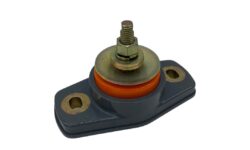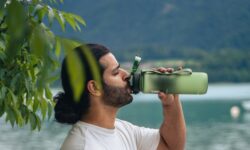Top 9 Fragging Techniques for Soft Corals
If you’re totally ready to start fragging soft corals in Canada in your aquarium but don’t know where to begin, these top ten tips will give you the confidence to dive right in. Here are some tips for a fragging experience with coral frags to assist you in creating the perfect soft coral frags:

First and foremost, safety:
When fragging any coral, always wear eye protection and gloves. This is especially important when fragging Zoanthids or Palythoa because palytoxin is extremely dangerous and can send you to the hospital if proper precautions are not taken. Additionally, buy gloves that are a good fit for you because glueing corals in Canada with loose-fitting gloves is difficult.
Preparation & tools
Before you start, make sure that your area of work is well-organized and that you have all of the necessary fragging tools on hand for coral frags. Good lighting will also allow you to see where you’re cutting and how you’re glueing your frags.
Uniform:
Unfortunately, there is no simple way to get glue out of your clothes or hair. Make sure you wear clothes that you don’t mind getting glued on. Also, if you have long hair, make sure to put it up.
Workshop tools
The essential tools for your fragging adventure are bone cutters, forceps, coral frags, scissors, glue, and frag plugs or rock rubble. It’s also a good idea to have a towel on hand to clean up any spills and dry your hands.
Rinse your tools in rainwater
Metal fagging tools rust over time, but they rust much faster if not rinsed in fresh RO water after each use.
Natural breaks and shapes
Assessing how your corals in Canada can be kept separate by following natural breaks and shapes will make fragging them easier and allow them to heal and grow back faster.
Tissue of glueing
You should not glue coral tissue from mushrooms and leather corals straight to a frag plug or rock rubble because they will form a slime coat that will shed the glue.
Tools for cutting
Use a bone cutter to remove the polyp and a small amount of rock from a mushroom coral colony. Otherwise, mushrooms can be trimmed down the middle as long as each side has a mouth. Then, place them in a container with some substrate to keep them from blowing all over your system in your tank.
Before sticking, dipping
Dip newly created coral frags in Iodine before securing them to a frag plug, promoting a healthier and faster recovery.
Conclusion
Putting freshly cut soft coral frags in areas with a lot of flow is recommended. Placing frags in nearly identical conditions to what they were in before will allow them to heal much more quickly. In addition, after a fragging session, we like to run carbon or do a water change.
Kevin Astle is the author of this article. To know more details about Online LPS Corals in Canada please visit our website: fraggarage.ca



